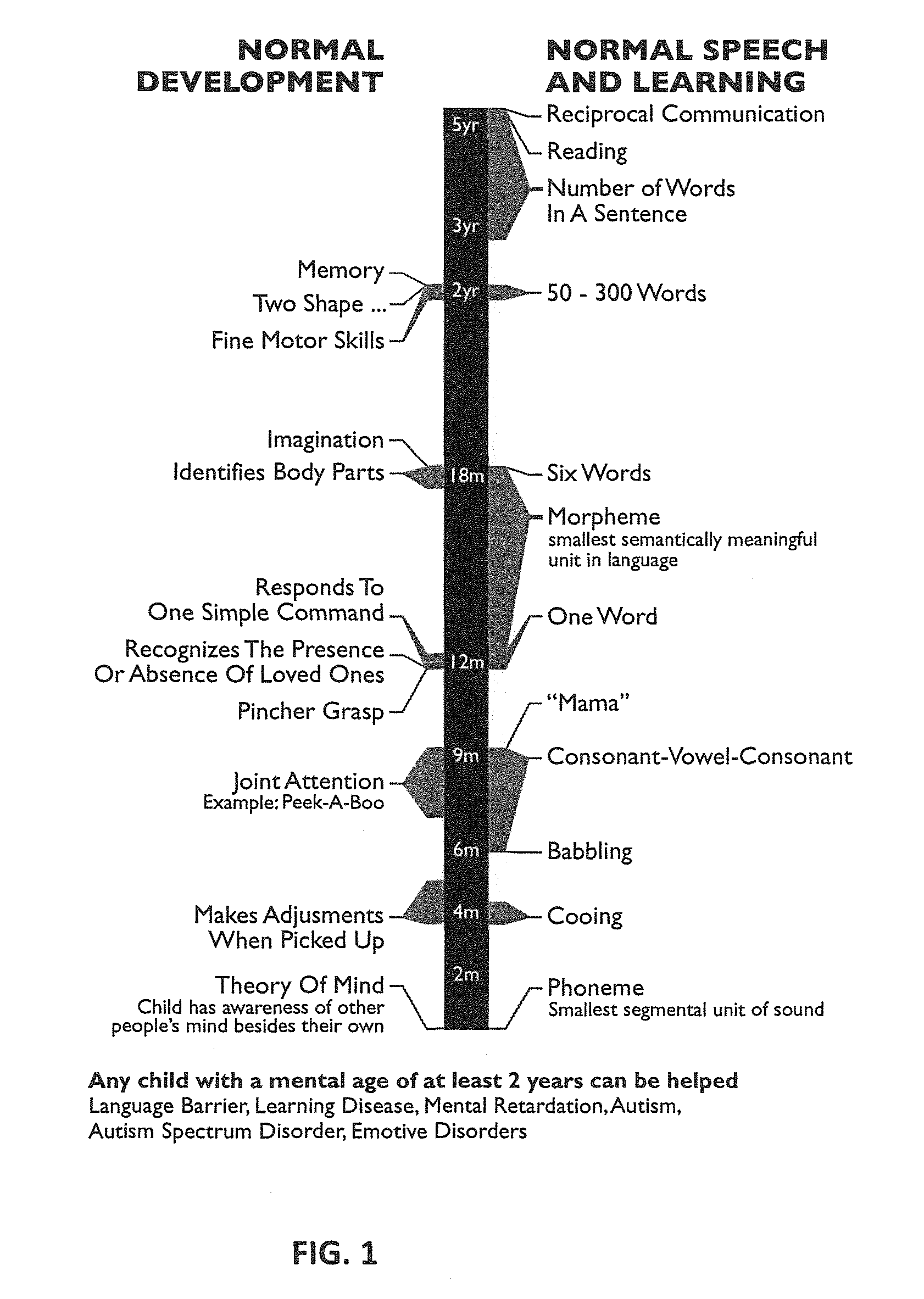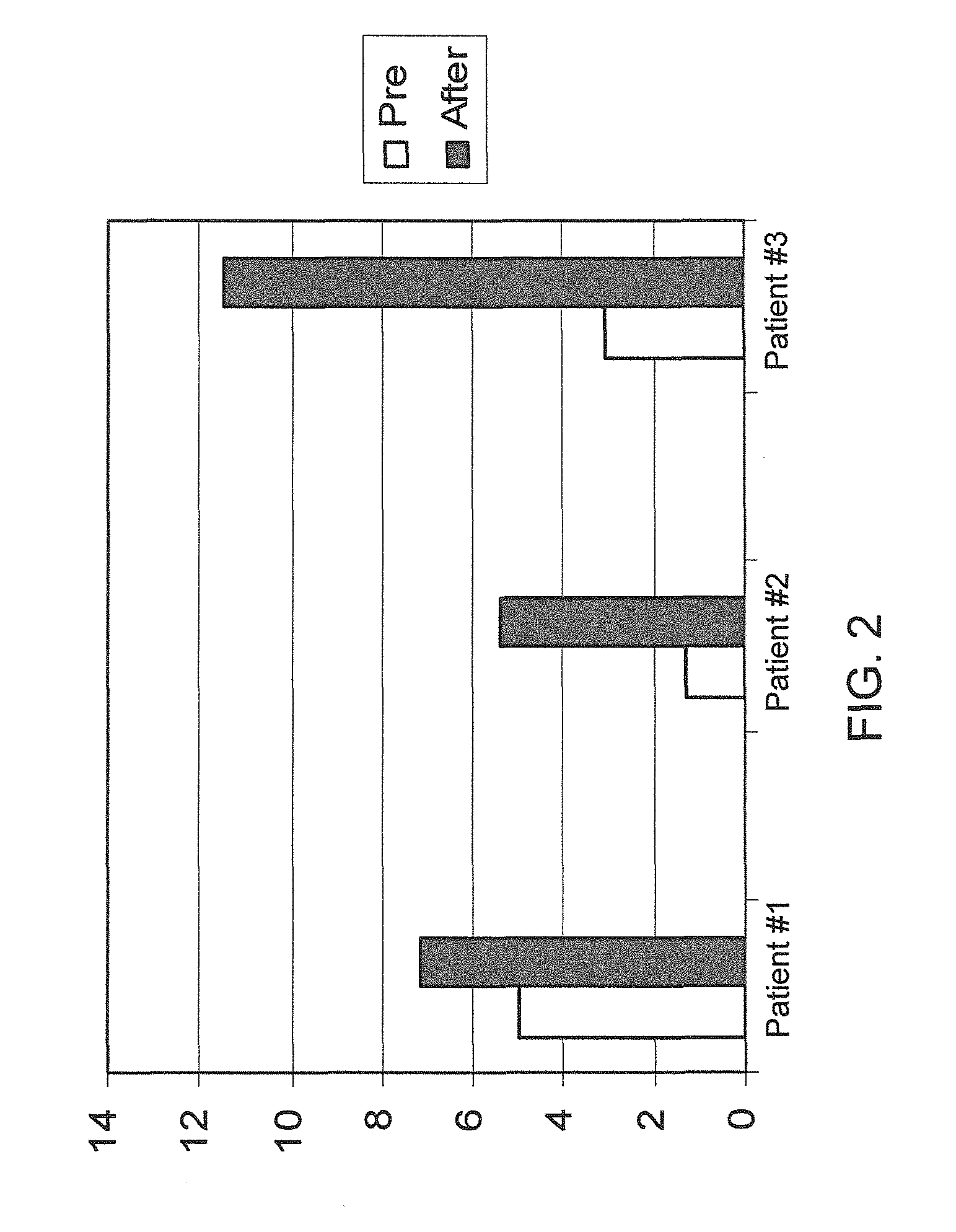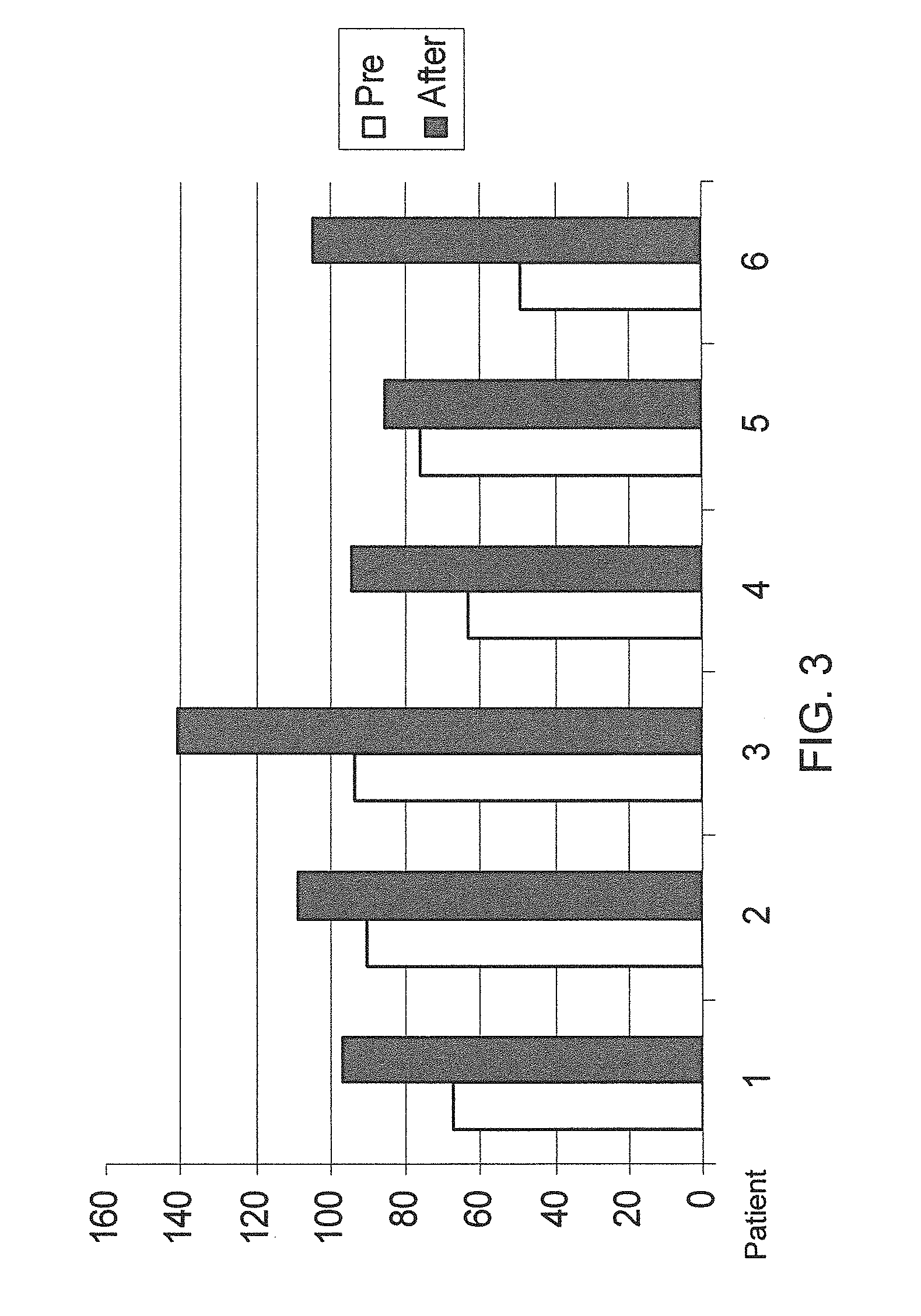Method of treating apraxia of speech in children
a speech and language learning and children's technology, applied in the field of speech and language learning impairment in children, can solve the problems of preventing a child from the development of the child's intellectual comprehension, affecting the development of the child's speech and language, and many early childhood development problems that may be missed treatment,
- Summary
- Abstract
- Description
- Claims
- Application Information
AI Technical Summary
Benefits of technology
Problems solved by technology
Method used
Image
Examples
example 1
[0063]An 11 year autistic boy whose speech consisted of the spontaneous 2 word-3 words, whose volitional response was at best rarely 1 words, mostly of the tone unintelligible, whose ability to imitate sounds was limited to occasionally repeating ma, ma after instructor. This was his best after approximately 8 years of special education services inclusive of speech and language. at the time of examination he was being taught sign language as the sole means of communication.
[0064]The 11 year old was determined to have a mental age equal to that of a 2 year old recognizing that 2 year olds have a vocabulary of between 50 and 300 words, use 2 words together, and have intelligible speech 25% of the time.
[0065]Thirty minutes after receiving 10 mg tablets of methylphenidate he was recorded (with the parents permission) before and after being given imitating the following sounds, words, and sentences in response. He was able to imitate “ma ma ma”, when shown a toy car and asked to repeat “...
example 2
[0066]A three and half year old boy was under early intervention for a year. He was able to make normal eye contacts, but was unable to follow instruction in saying single syllables such as “ma”“ma”. The boy was determined to have a better than 24 month stage of nonverbal development, but less than 12 months development stage of verbal development. He was administered with one dosage of 5 mg of methylphenidate.
[0067]Half an hour later, this boy was able to follow instructions to mimic the sounds “ma”“ma”“ga”“ga”.
example 3
[0068]An eight year old boy with normal facial expressions, but was having difficult in school and was under special aid program. He was able to answer questions as to “what is your name”, “how old are you”, “what is your mama's name” and to describe school activities in simple sequence. But when he was asked to describe the books he read in class, he was unable to describe any content of any books. Instead he described what actions the book had. He could not give one example of the stories taught in the class. He was determined to have a good non-verbal development, but impaired verbal development. The boy was administered 5 mg of Dexedrine.
[0069]Half an hour later, the boy was able to state in sequence what he did in school with some details, and was able to describe a story about Abraham Lincoln and George Washington. He was also able to tell the difference of the word “compare” versus “contrast”, answer questions as to the differences between Abraham Lincoln and George Washingto...
PUM
| Property | Measurement | Unit |
|---|---|---|
| time | aaaaa | aaaaa |
| time | aaaaa | aaaaa |
| physical ability | aaaaa | aaaaa |
Abstract
Description
Claims
Application Information
 Login to View More
Login to View More - R&D
- Intellectual Property
- Life Sciences
- Materials
- Tech Scout
- Unparalleled Data Quality
- Higher Quality Content
- 60% Fewer Hallucinations
Browse by: Latest US Patents, China's latest patents, Technical Efficacy Thesaurus, Application Domain, Technology Topic, Popular Technical Reports.
© 2025 PatSnap. All rights reserved.Legal|Privacy policy|Modern Slavery Act Transparency Statement|Sitemap|About US| Contact US: help@patsnap.com



